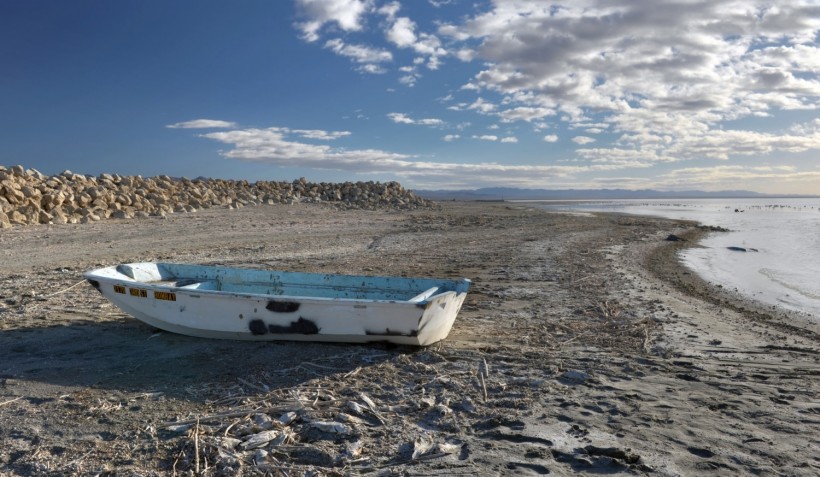Thousands of dead fishes had floated in coastal beaches near Tampa Bay, Florida as massive algae bloom turned the water toxic. "This is an absolute nightmare," says Tyler Capella, who runs a fishing charter business in Tampa Bay.
Marine scientists say that the organism brought by the red tide, worsened by pollution, had 'ravaged' several kinds of marine life in Florida so far this year, and have been happening more frequently than usual, although red tides are natural in Florida coasts.
"Dead fish as far as you could see in every direction, big ones, small ones. Looked like a bomb had gone off," said Capella after documenting the dead fishes to pressure elected officials to make some actions.
Fishermen like Capella have grown worried that their livelihood will be greatly affected. "My fear is that this entire region has the potential to become a dead zone," he noted.
Pollution may lead to more red tides

The Salton Sea in southeastern California, 2015. Algae blooms due to regularly caused fish dies. Evaporation also caused increased salinity levels. As of 2021, the lake has significantly shrunken, and no fish appear to have survived.
In the past weeks of April, former Piney Point phosphate mining facility sprung a major leak, or 'intentionally discharged' gallons of water from the reservoir, flowing into the ground and local waterways directly into Port Manatee, an entrance to Tampa Bay on Florida's west coast - a situation officials described as a potential 'catastrophe'.
Although the drainage was an effort to prevent the reservoir from collapsing, experts say that "threat to the environment remains."
The 200 million gallons of polluted water from the old phosphate plant dumped in the bay has now covered about 100 miles of the Florida Gulf Coast, reaching Tampa Bay. Aside from the fact that the oceans have also been warming significantly due to climate crisis, red tides are becoming worse and more frequent due to pollution.
Michael Crosby, who studies red tides at Sarasota's marine laboratory, said the movement into Tampa Bay is very unusual. "It becomes very difficult for it to get back out again because of the tidal sloshing back and forth," he said.
Also read: Experts Unsure if Upcoming Tropical Weather May Affect Worsening Red Tide in Tampa Bay
Red tide increases along gulf beaches
In the latest report from state environmental officials on the algae bloom in Florida, red tide concentrations are now increasing along the gulf beaches. Reports say that the uncounted numbers of dead fish and marine life in Tampa Bay has decreased, but high concentrations of the toxic algae has reached along the Gulf Coast, from Hernando to Sarasota counties.
Numbers show that 109 sites had been affected by the organism. High concentrations were found at 27 sites in Sarasota County; 12 in Pinellas; seven in Pasco; and three each in Hillsborough and Manatee counties.
Meanwhile, highest concentrations were found off Redington, Madeira and Upham beaches in Pinellas County; Terra Ceia in Manatee County; and in Sarasota at New Pass, Bird Key, Lido Key, Siesta Key, Turtle Beach and Nokomis. Pasco, Pinellas, Hillsborough, Manatee and Sarasota counties reported fish kills as well in the past weeks.
City officials announce a month-long backup of city services because of red tide cleanup.
Also read: Elder Apes Murder Albino Chimp Baby Just Days After Rare Sighting
© 2024 NatureWorldNews.com All rights reserved. Do not reproduce without permission.





